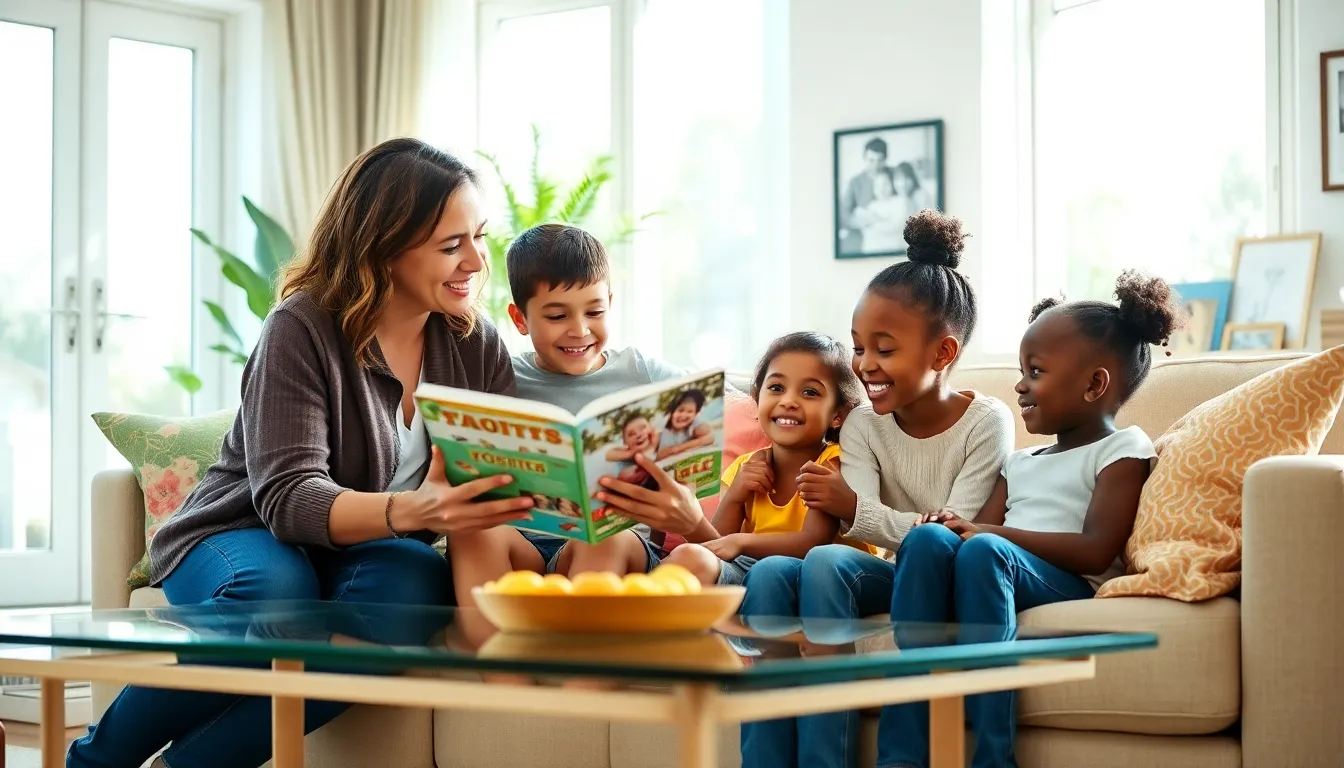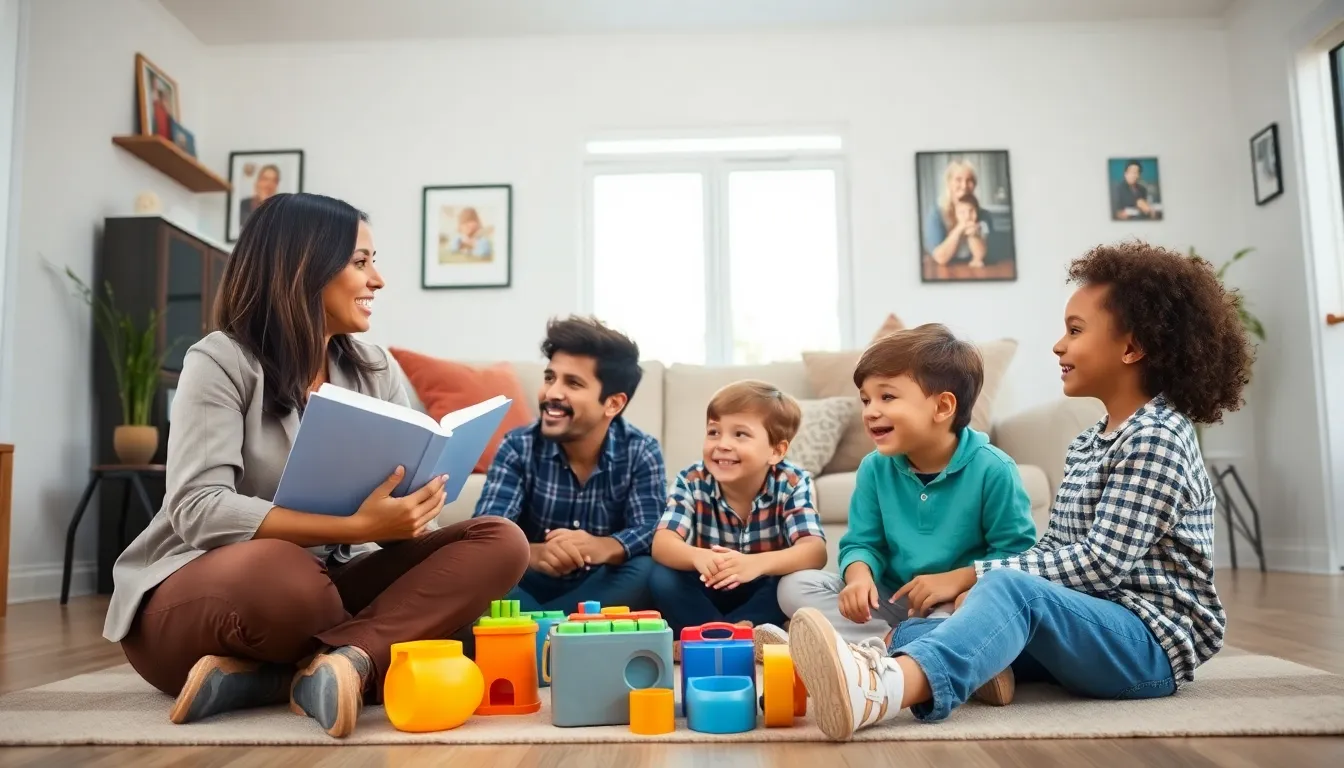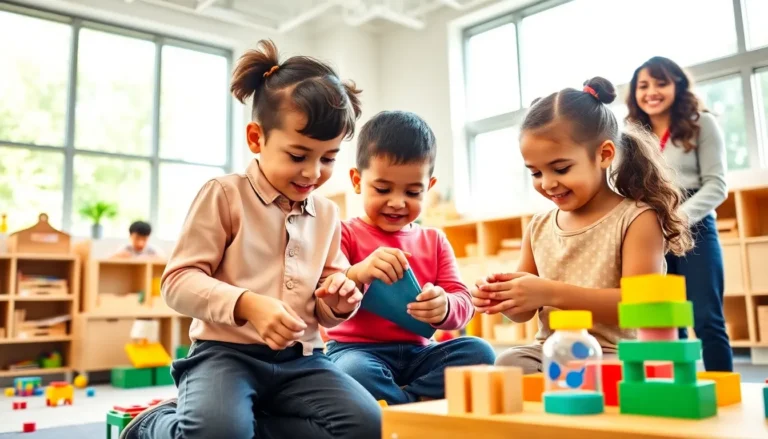The age-old debate between fostering and adoption is akin to choosing between apple pie and chocolate cake: both options are sweet but serve different appetites. If you’ve ever found yourself wondering whether fostering or adopting is the best avenue for expanding your family, you’re not alone. With cuddly kids looking for a safe haven and loving homes, it’s crucial to understand the distinctions and unique benefits of each path. So, buckle up as we jump into foster care and adoption, armed with insight, humor, and more than a dash of heart.
Table of Contents
ToggleWhat Is Fostering?

Fostering involves providing temporary care for children who are unable to live with their biological families. It’s often seen as a bridge, a nurturing stopover on the way to a more permanent setting. Fostering can be a fulfilling experience, one that opens your heart and home to children in need.
The Purpose of Fostering
The primary goal of fostering is to ensure the child’s safety and well-being while working towards a permanent solution, often reunification with biological parents. It’s not just a place to crash for a few nights: fostering encompasses offering love, stability, and life lessons during a critical time.
Types of Foster Care
There are several types of foster care to accommodate varying needs:
- Traditional Foster Care: Children stay temporarily until they can return home or find another permanent placement.
- Respite Care: Short-term care is provided for foster families to give them a break, ensuring they don’t feel overwhelmed.
- Emergency Foster Care: This occurs when a child must be placed immediately, often due to unsafe situations at home.
- Therapeutic Foster Care: For children with special needs requiring additional support and resources.
Each type of foster care addresses specific circumstances, and understanding these differences is key to navigating the fostering landscape.
Challenges and Rewards of Fostering
Fostering is filled with an array of emotions, it can be a rollercoaster ride, complete with highs and lows.
While fostering opens up the chance to touch a life, it also has its challenges.
- Emotional Attachment: It’s hard not to get attached. When a child bonds with a foster parent, letting go can feel like a heart-wrenching heartbreak.
- Unpredictability: Foster caregivers may face sudden changes when children transition back to their families or move onto other placements.
- Support Systems: Finding support from local agencies can sometimes feel like fishing in a pond with no fish, necessary but difficult.
Yet, these challenges are often matched by considerable rewards:
- Making a Difference: Knowing you’re providing a child with safety and love is immensely gratifying.
- Skill Development: Foster parents grow in emotional resilience and patience, learning valuable lessons along the way.
- Community Connection: Joining the foster care community can create bonds with others who understand the nuances of the journey.
What Is Adoption?
Adoption serves as the permanent option when someone wants to bring a child into their family. Unlike fostering, where the arrangement is temporary, adoption is all about creating lasting relationships. The process of adopting can involve various steps, but it fundamentally creates family ties equal to biological relationships.
The Adoption Process
The adoption journey often requires a series of steps, including:
- Application: Interested families initiate the process by submitting applications to adoption agencies or local authorities.
- Home Study: A crucial part of the process, this assessment evaluates the family’s readiness to adopt, examining living conditions, parenting philosophy, and more.
- Matching: Agencies work to match child and family, taking care to find the right fit based on needs and preferences.
- Finalization: The legal process culminates in a court hearing that seals the adoption, giving the child a permanent place in the family.
Legal and Emotional Considerations
Adoption is deeply rooted in legal frameworks. It involves the transfer of parental rights, and potential adoptive parents must be prepared for legal responsibilities. Emotionally, adoptive parents prepare for the child’s unique history and needs, fostering connection while navigating potential challenges of integration into the family.
Challenges and Rewards of Adoption
While adoption can be immensely fulfilling, it comes with its own set of challenges:
- Adjustment Period: Children may take time to adjust, particularly if they have experienced trauma or instability in their past.
- Navigating Emotions: Both the child and adoptive parent may experience complex emotions throughout the process, from excitement to uncertainty.
- Legal Issues: Completing adoption can feel daunting due to the legal intricacies involved.
Even though these hurdles, adoption offers many heartwarming rewards:
- Family Fulfillment: The joy of building a family that includes a child who may not have had a stable home is incomparable.
- Continued Growth: Adopting teaches resilience, humility, patience, and deep love.
- Creating Lifelong Bonds: Adoption shapes unbreakable connections that tie families together through love and commitment.
Comparing Fostering and Adoption
When contrasting fostering and adoption, one can see they pivot around different philosophies of care. Fostering leans towards temporary solutions where parents provide care until children can return home or find another permanent option. On the other hand, adoption creates a lasting family bond, implying that the child will remain with the adopting family indefinitely.
- Duration: Foster care can range from days to years, while adoption is a permanent arrangement.
- Legal Rights: In fostering, biological parents retain rights until the court decides otherwise, whereas, in adoption, these rights are fully terminated, establishing new, legal family ties.
- Emotional Dynamics: Fostering often involves navigating the emotional complexities of reunification while adoption reshapes families through deeper connections.
Eventually, both avenues come with their own unique offerings, challenges, and emotional impacts.
Choosing the Right Path for You
Deciding between fostering and adoption depends on personal goals and circumstances. Potential foster parents might find that a willingness to navigate uncertainty aligns with their lifestyle. For those wanting to create a lasting family bond, adoption might feel more appealing. It’s crucial to consider your availability, emotional readiness, and long-term commitments.
One practical step to discern the right path is to connect with support groups and individuals who have walked either journey. Their stories and insights could shed light on your decision-making process, offering clarity amidst confusion.




